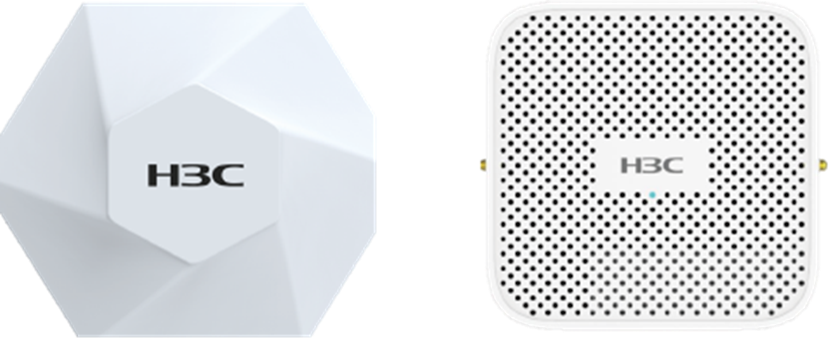Country / Region
H3C 5G Cloud Cell
In the 5G era, 70% of voice services and 90% of data services occur indoors. Therefore, indoor network coverage is important. The operator's traditional indoor distribution mode is not applicable to the 5G era. The main frequency bands of the domestic 5G network are 2.6 GHz, 3.5 GHz and 4.9 GHz, which are increased compared with the 4G network frequency band, leading to greater transmission loss and penetration loss. Therefore, 5G indoor coverage is unlikely using the traditional approach. Operators need another alternative to solve the signal coverage issue.
The H3C Group launched active indoor distribution solution. The solution can not only solve the indoor 5G signal coverage issue, but also handle the access of different network devices such as WLAN and short-distance IoT. The H3C 5G cloud (small) cell is composed of a baseband processing unit (BBU), an extension unit (FSW), and a remote radio unit (pRRU). The extension unit supports two-stage cascade. Each extension unit can be connected to a maximum of eight remote radio units. The extension unit is connected to the baseband unit through the optical fiber. The cascaded two extension units are connected through the optical fiber. The extension unit is connected to the radio unit through the optical hybrid cable.
Products
BBU5100

Customized OTII server to adapt to the environment of the edge equipment room
Support containerized and cloud deployment
Support co-deployment of UPF and MEC
Frequency band | Sub-6 GHz |
Cell bandwidth | 100 MHz |
Number of carrier * channels | 2*4T4R or 4*2T2R |
Dimensions | 440 mm x 450 mm x 87.2 mm |
Synchronization mode | GPS/Beidou 1588+syncE |
Power supply | AC 220V/DC-48V |
Operating temperature | Long-term: -5°C-45°C, short-term: -10°C-50°C |
Port | 25G optical port *4 (fronthaul) 10G optical port *1 (backhaul) GE copper port commissioning |
Virtualization architecture | Support separation of CU and DU Support containerization Support co-deployment with UPF, CRAN, and vAC |
FSW5100

Support any cell combination and division
Support two-stage cascade
Support Ethernet switch
Synchronization mode | SyncE + 1588V2 |
Port capability | Up to 8 RRUs |
Dimensions | 440 mm x 330 mm x 43.6 mm |
Function | Support cell division and combination |
Cascading capability | Up to 2 cascades |
Operating temperature | -5-55°C |
Power output | Optical power composite cable, 8*802.3bt (PoE) |
Typical power consumption | 55 W |
Weight | <4.3Kg |
Protection level | IP20 |
RRU14 & RRU5202

Green and energy-saving design
Support POE external power supply
Support all-standard IoT service extension
Model | PRRU5114 | PRRU5202 |
Frequency band | n78 | n41 |
Transceiver channel | 4T4R | 2T2R |
Output power | 4*250mW | 2*250mW |
POE output power | 30 W | 30 W |
Maximum length | Optical power composite cable: 200m, Cat 6A network cable: 100m | |
Power supply | Optical power composite cable/PoE | |
Installation mode | Ceiling-mounted and wall-mounted | |
Advantages
H3C active indoor distribution solution has the characteristics of strong adaptability, extension and cost optimization. The solution follows open concept and cloud design, supports virtualization and network slicing, complies with the OTII carrier-grade equipment specifications, and meets the harsh environment requirements of edge computing. The solution also supports IoT and edge computing extension, and can provide a platform for cloud computing and artificial intelligence.
Strong adaptability
Comply with OTII carrier-grade equipment specifications
Meet 5G service requirements in various scenarios
Meet harsh environment requirements of edge computing
Strong extension
Provide a platform for cloud computing and artificial intelligence
Support IoT and edge computing extension
Provide access network cloud and enhance macro and micro collaboration capacity
Cost optimization
Follow open concept and cloud design
Support virtualization and network slicing
Provide flexible deployment of resource pools and open interfaces


